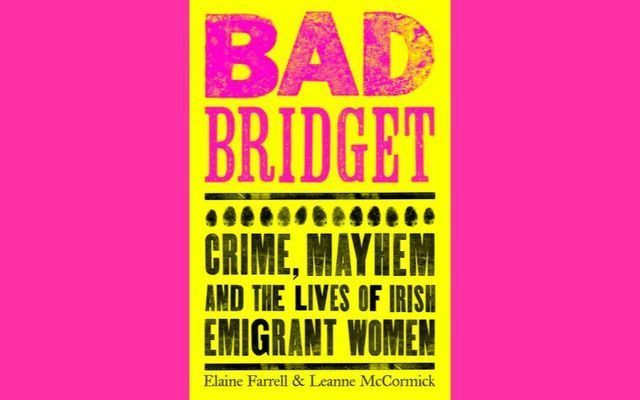A book offering a captivating account of the often-ignored and moving story of how Irish women dominated North American prisons in the 19th century is the perfect read this St. Brigid's Day Bank Holiday.
"Bad Bridget: Crime, Mayhem and the Lives of Irish Emigrant Women" by authors Dr. Elaine Farrell and Dr. Leanne McCormick explores how immigrant Irish women often descended into crime in 19th-century North America.
The book is the result of more than 10 years of painstaking research and details some of the most shocking statistics associated with crime among Irish women in North America.
For instance, Farrell and McCormick discovered that a staggering 83% of the female prison population in Toronto was listed as Irish in 1861. Worse still, a whopping 86% of the female prison population in New York was listed as Irish in 1862, meaning that Irish female prisoners far outweighed every other nationality combined.
Farrell and McCormick said some Irish women were happy to be jailed due to the socio-economic conditions they faced, adding that they even found records of some Irish women who pleaded with a judge to give them a prison sentence.
The authors said they also observed a wide variety of crimes, from petty theft and solicitation to murder and high-profile robberies.
"We think that it’s important to tell the story of the Irish girls and women accused of committing crimes because it offers an insight into the realities of life in 19th and early-20th-century North America," Farrell and McCormick told IrishCentral.
"It shows the complexities of experiences, including the poverty, addiction, lack of support networks, family struggles, and survival strategies. It shows vulnerability as well as women’s agency.
"The figures are important because they show that it wasn’t just one or two Irish girls and women getting into trouble with the law, but thousands and thousands. But the numbers can also be quite misleading. Prison registers, for instance, document the girls and women who ended up behind bars, but it’s impossible to know who was guilty or not guilty. Likewise, these records do not tell us anything about those who got away with the crime."
The book explores crime levels among Irish women in three North American cities - Toronto, New York, and Boston - in the decades following the Great Hunger.
Farrell and McCormick said they included Toronto in the study to see if crime rates differed in Canada, which attracted a larger percentage of Protestant Irish migrants than the United States during the 19th century.
However, they observed a similar level of crime in Toronto as they did in both New York and Boston.
"In the end, we found in Toronto similar themes of poverty, alcoholism, and discrimination as in the US. And like in Boston and New York, Toronto offered lots of opportunities to those who wanted to engage in crime."
They also noted that crime and imprisonment rates dropped among the Irish population in North America toward the end of the 19th century as other immigrant groups began to replace the Irish behind bars.
Farrell and McCormick added that they observed anti-Irish discrimination and nativism in certain cases, particularly in the decades of mass emigration that followed the Great Hunger.
"Some women blamed their thefts or involvement in the sex industry on their inability to secure work as servants due to their Irishness. In court, discrimination might mean that someone was imprisoned rather than let off with a caution.
"At the same time, we see some of our women playing up to contemporary stereotypes of the Irish. Eleanor David was arrested for drunkenly singing outside a music hall in Toronto in 1865. She said that she loved whiskey and ‘as long as there was a drop of Irish blood left in her body she would drink it’."
They also pointed to the example of Maggie Smith and her hilarious exchange with a judge in New York.
"When a judge said to her, ‘I’m afraid you’re a dissolute woman, Maggie’, replied: ‘No, your Honor … I’m an Irish woman.’"
The book has been hard work for Farrell and McCormick, who also run a podcast of the same name. The pair have spent years trawling through court and institutional records in search of Irish women accused of committing crimes or tracing individuals through birth, death, or marriage certificates.
However, they described the work as "really interesting", adding that it provides a "fascinating glimpse of these women’s lives".
Dr. Elaine Farrell is a social historian at Queen's University Belfast, while Dr. Leanne McCormick is a lecturer in Modern Irish Social History at Ulster University. "Bad Bridget" is published by Penguin Books and is available at all good book stores. It is also available as an e-book.

Looking for Irish book recommendations or to meet with others who share your love for Irish literature? Join IrishCentral’s Book Club on Facebook and enjoy our book-loving community.




Comments